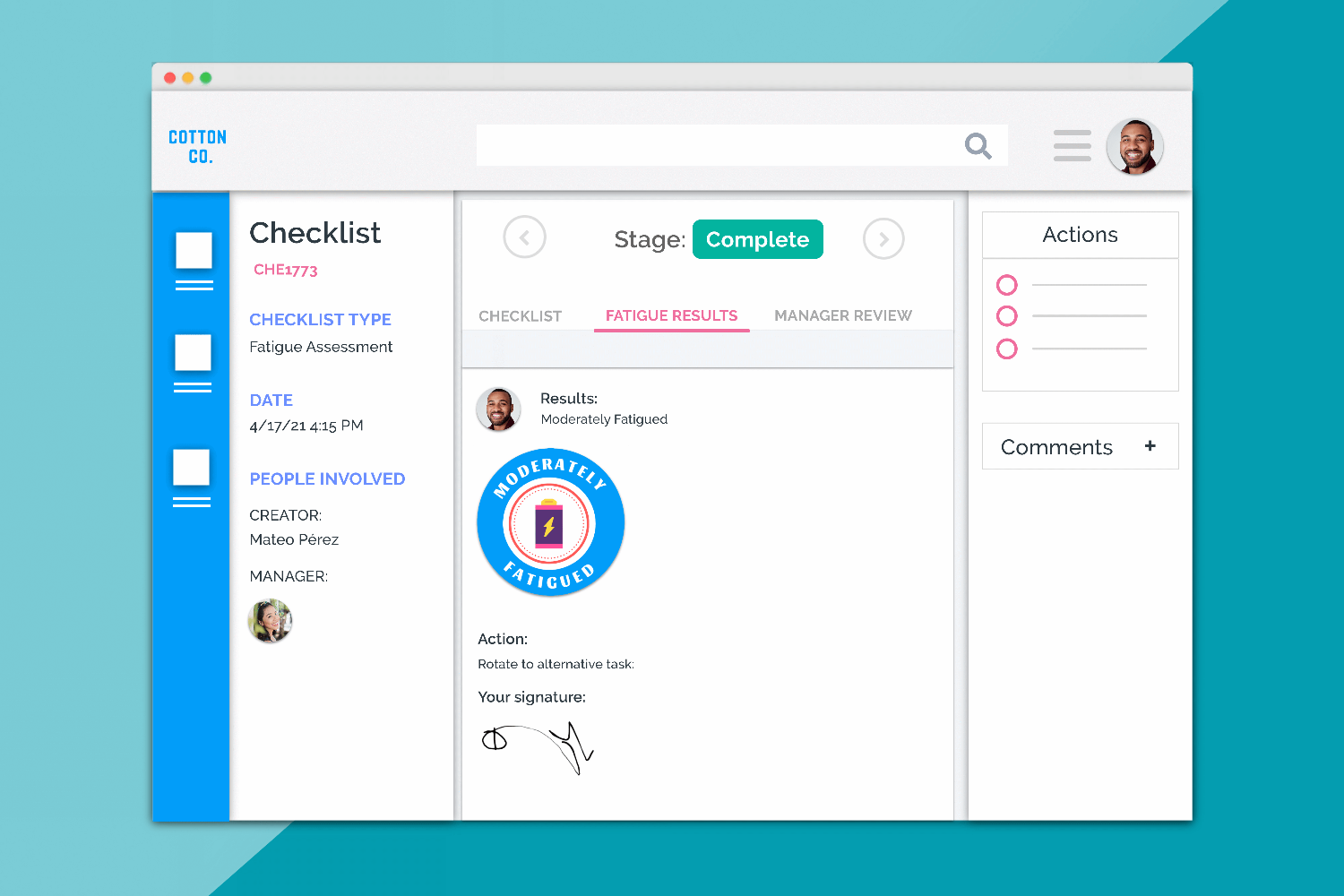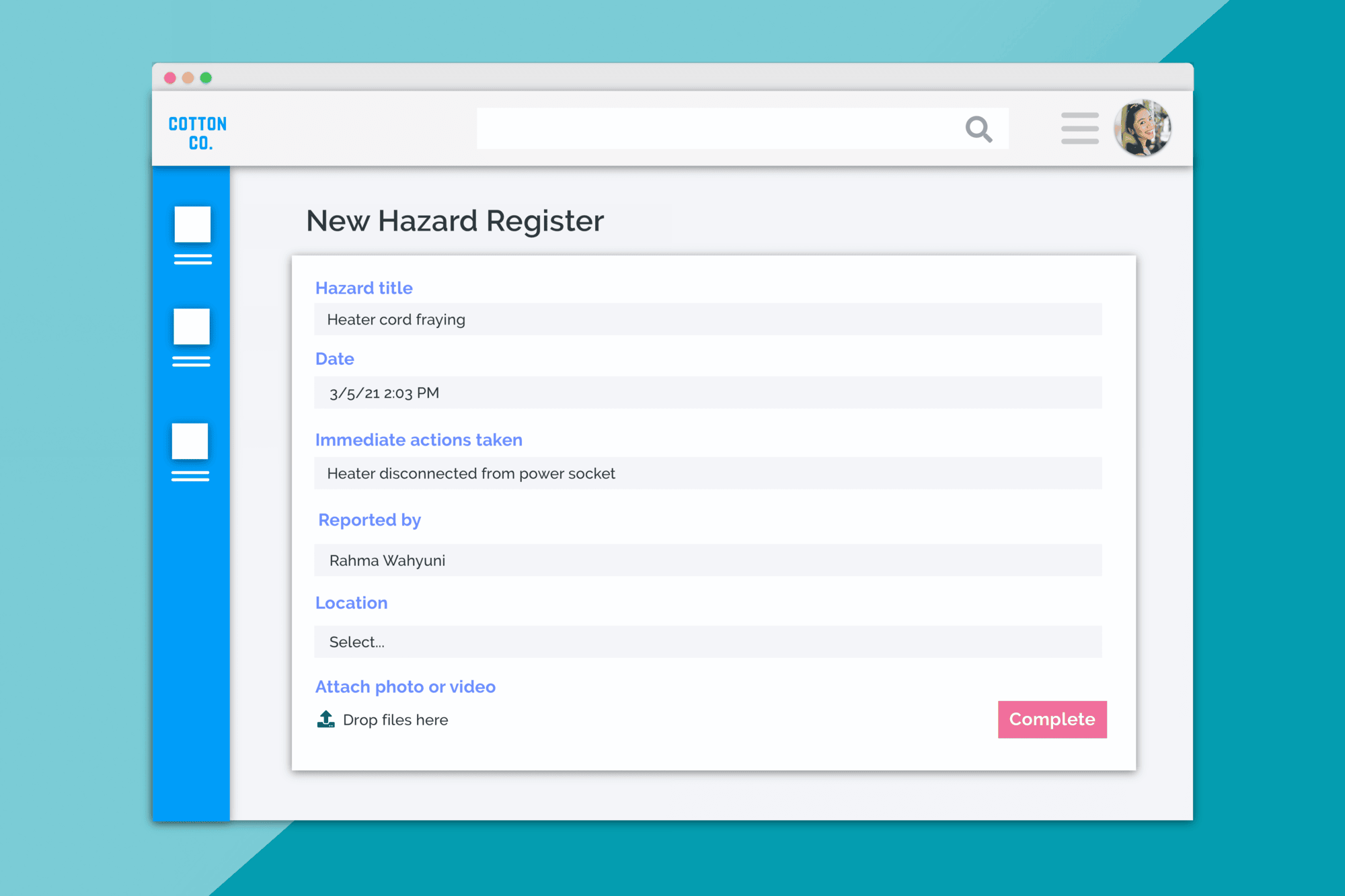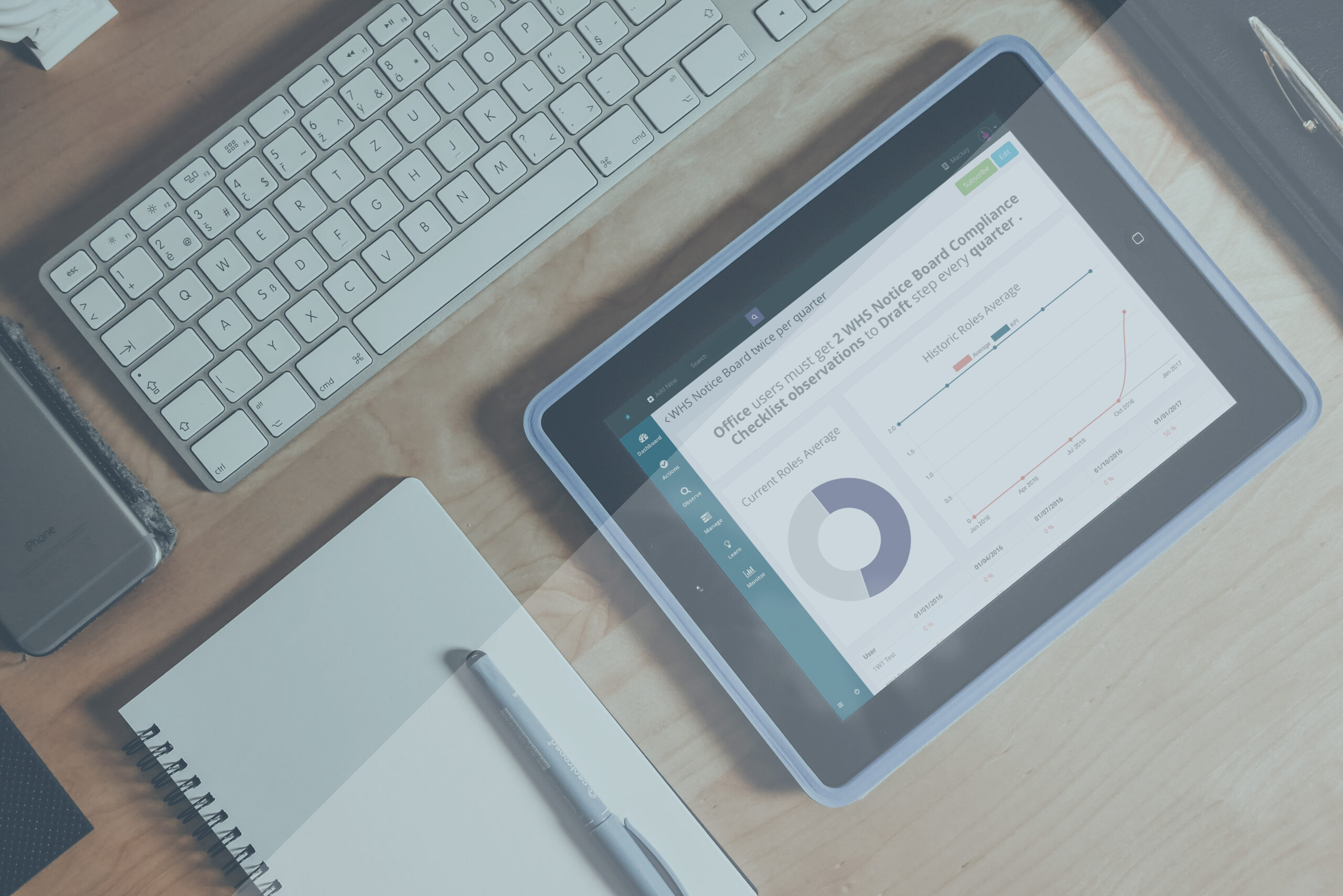
Product Development update February 2017
Another big month of changes! To many to list in but a simple intro paragraph! You can read about the lot of them below:
Major Updates
New KPI Module
(Currently active, updates coming Friday 3rd of March)
The New KPI Module in Donesafe allows team leaders to set KPIs and keep track of those KPIs for Audits, Observations, and Consultations.
To illustrate exactly how it works, you could create a KPI that says:
All workers in MY TEAM whose ROLE is “Worker” in LOCATION “Sydney” must complete TWO AUDITS using the TEMPLATE “WHS checklist” PER QUARTER. The screenshot of the form to administer this is below:
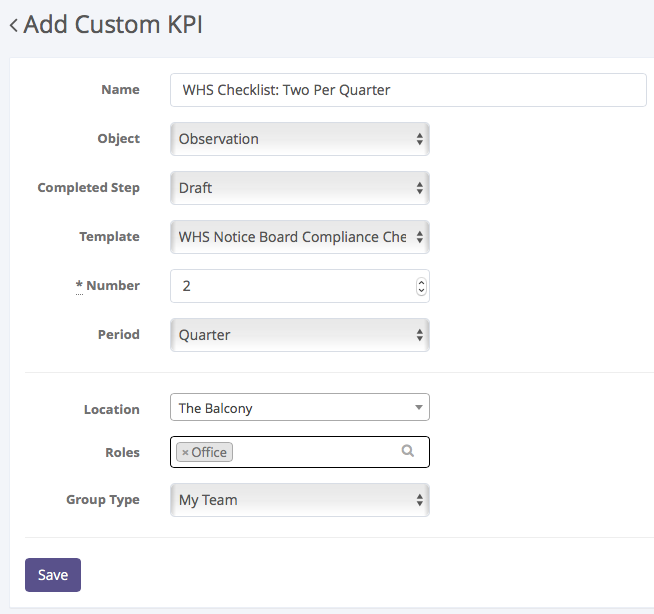
The KPI report created would then report on your team based on those parameters. This report only
needs to be created once and will update as you move through each time frame, in this case, a
quarter.
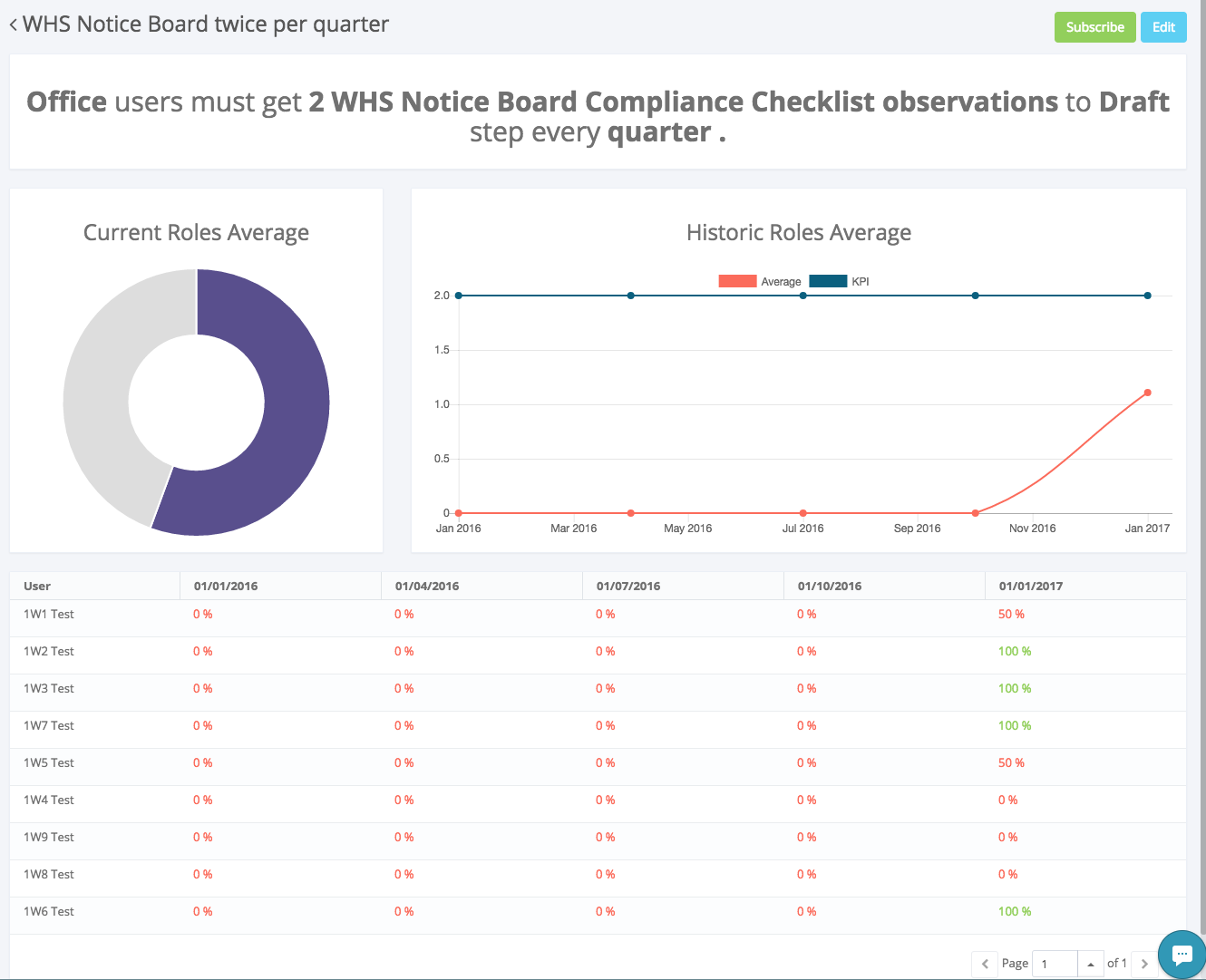
The report produces updates as users complete their reports and shows the KPI as compared to the
real completion rate. It also allows team managers to keep track of who has and who hasn’t
completed their required tasks.
This module’s functionality in Donesafe will expand over time (in fact, some more upgrades are
coming on 3 March 2017). Already though, it allows a great deal more oversight from team leaders
for their subordinate’s activities in Donesafe, in regards to repeating audit templates. This is
particularly useful when dealing with larger teams.
One important caveat:
KPIs are created to view data from the creator’s organizational hierarchy. So if a team leader creates a KPI, it will apply to their direct team, whereas if a company CEO creates one they could potentially view data from their entire company depending on the setup.
It is important to understand that for a team leader to only see their subordinate’s records, they themselves must create the KPI to do this; it cannot be done by somebody else.
There are plans to allow site admins to be able to create these on behalf of specific people, or
automatically in the future, however, that is some time off. The reason that this approach was taken
is that in larger businesses, individual managers have individual requirements and KPIs for their
teams. It was because of the granularity needed, that a granular delivery method was developed, at
least in the short term.
Enabling the KPI module
The KPI module is hidden by default, both at the module and role level.
- To enable it for the account
Go to Settings > Modules > KPI. Click the edit tool and click SHOW
- To enable it for a role
Go to Settings > Roles. Selecting the Role you’d like to edit it for, go down to KPIs, and using the Role tools, enable it for that Role.
Workflow UI Update
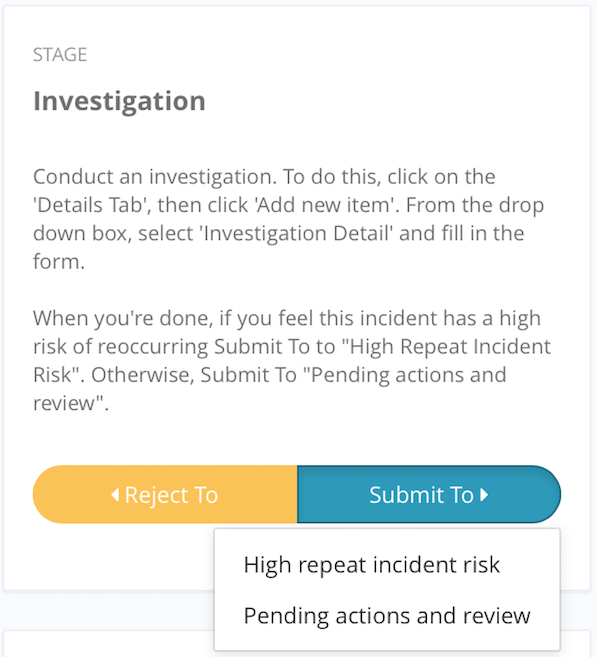
From a usability standpoint, this new user interface update is perhaps the most significant
improvement from an everyday user standpoint. It allows admins to include instructions above the
workflow button. It also changes the workflow button into a back and forward style interface,
shifting the stage names into a drop box that appears below, and displaying the current workflow
stage as a title. Finally, it shifts the Follow button to the top of the record and adds the location data
below.
This change addresses a few issues:
- Users weren’t able to tell which were advancement steps or rejection steps.
- It wasn’t clear how the workflow button worked.
- Users without training were often unsure of what to do when creating or after being assigned a record.
- It wasn’t clear when a workflow had met its end.
This new update resolves these issues and a handful of others in a simple, clean way and we’re all really excited about it.
New Actions Default View
This one has been a common request for a while. Previously, actions defaulted to show all actions
that were due within the next seven days, including actions that had already been closed. Many
users found this difficult to work with as it often made it unclear what actions needed to still be
completed. Furthermore, if an action was missed, it would disappear from the default view, often
resulting in actions staying unfinished.
Now, the default action view will show by default: All OPEN or OVERDUE actions due from the
beginning of time to seven days. This makes it considerably easier to go through and quickly close
out your actions without any uncertainty around whether they’ve been completed or not. To
facilitate this, an additional filter was added so that users could filter the state at the parent level.
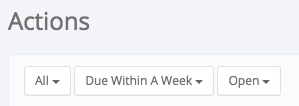
Added Rules on who has rights to, and where new Contact type users can be added.
Adding new contact users is done by clicking on the add new user button next to people selectors as shown below.

This should be done in situations where the user doesn’t already exist in the system; such as a site visitor or a customer for example. Admins can now control who has the ability to add a new contact user during the creation of a new record. This is done in two places:
- Via a Yes/No option in RolesFrom Settings > Roles an admin can now designate which user roles are allowed to add new contact users. This is administered as a special permission at the top of the roles page:
If this is set to ‘No’, then users of that role type cannot create contact type users at any time. - Via the Module Menu
From Settings > Modules you can now go in and turn off the ability to add contacts for all users for that module. This will override the Role permission to ensure that under no circumstances, no users can add a contact user on this module.
New In-depth materials on Permissions now Available.
Donesafe’s permissions system is extremely configurable and powerful; which is great, but it does
make it one of the trickiest parts of the platform to configure for more advanced, enterprise-level
systems with thousands of users.
To account for this, documentation has been put together to explain the relationships between Role
Permissions, Organizational Hierarchy, Locations, and Workflow Restrictions. If you’re interested it’s
a great read!
Plain English Documentation: Head to help.donesafe.com for more information and assistance.
System Description of Roles: Head to help.donesafe.com for more information and assistance.
Update to New Report Builder
The report builder was already awesome. Now it’s a bit more awesome.
You can now choose a secondary grouping. For example, you might like to see incidents, grouped by quarter AND locations. You can now do this with ease (see below). You can see here we now have incidents by quarter grouped by location. Ta-da!
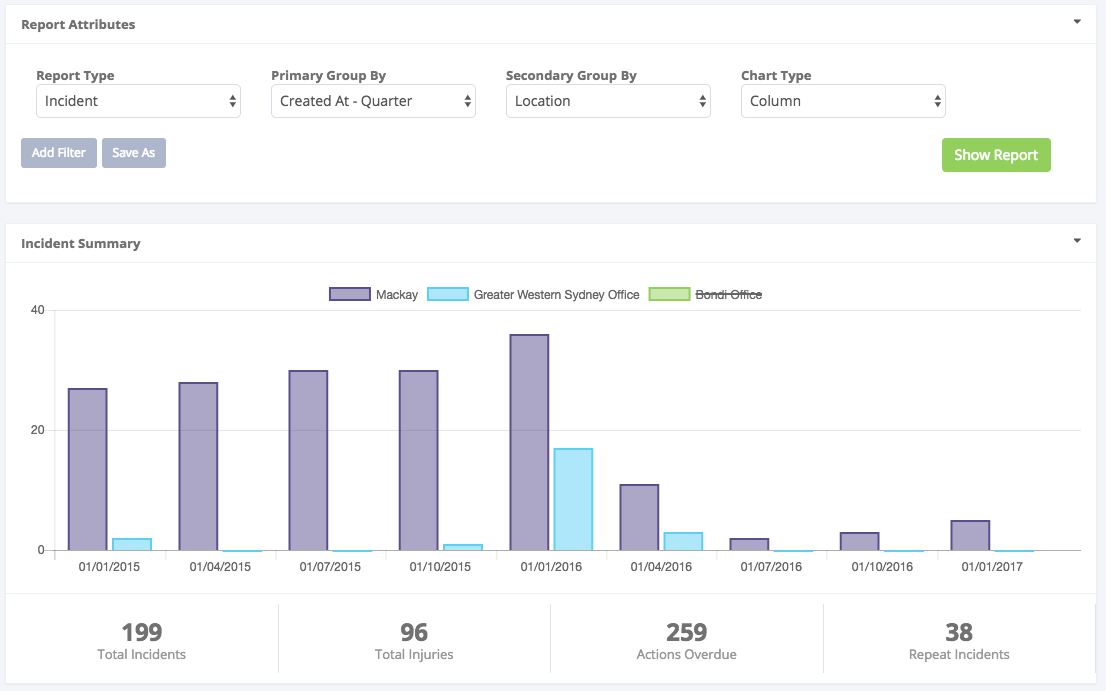
Furthermore, you can filter out grouping results (on the chart only) by simply clicking on the grouping you’d like to remove. You will see in the above screenshot that I have crossed out the ‘Bondi Office’. This location is then removed from the report chart.
Massively Improved Global Search
Global Search has received some much needed TLC. There have been some significant changes, which are listed below:

- Global search now searches ALL records
In the past, global search only searched a handful of modules. Gone are those days. Now global search returns records results on any record in the system the active user has rights to see. The only things it won’t search directly are Actions (which are indirectly through their relationship to other modules) and the body text of Knowledge Base articles. Apart from that, everything else on the platform is now searchable. - The global search returns ONLY records users are allowed to see
This was the case before, but I thought it pertinent to say after mentioning that it searches all records. - It’s super fast
Thanks to the work done last month on caching permission rights, global search is now lightning fast by comparison to its predecessor. That’s not to say it’s instant for all searches, but it can search thousands of records and return useable results in under a second. Now that’s impressive. - Search Results are Filterable
If you can’t find that record that you’re looking for you can now filter the results by module type, location, and a to and from date. Nice and handy.
Related To Upgrade
Related To was also upgraded to use the same search code that Global Search uses. This means that relating records is now also; super fast. It also removes any risk of users seeing record names that they shouldn’t be able to. Furthermore, search results will also show up with the module name to which that record relates. This makes it significantly easier to identify the record you wish to relate to.
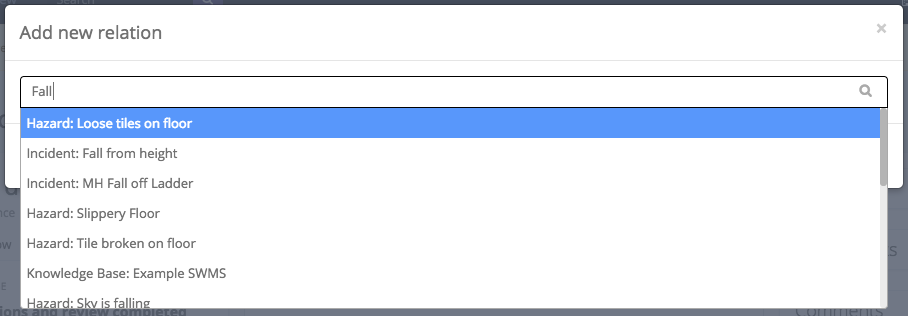
New Record IDs
Finally, we updated the ID numbers for all records to be be shown as unique between modules. This may seem like a minor change, but it makes it significantly easier for the user to now searches for a specific record. Where before an Incident’s ID might have been 0354, it now displays as INC0354. This ID can by typed into the global search bar at the top of the page to return a search result for that specific record making it significantly easier, particularly for administrative staff, to find and reference records easily.

Minor Updates
Actions
- Call To Action Button on Actions
It’s now possible to include a Call to Action button with your Actions that allows you to direct a user to a custom URL. Currently, this functionality can only be triggered via an action track, however, it provides an extra layer of functionality that many users were asking for.
Contractor Register
- Now sorts alphabetically by vendor name by default.
Updated Chemical Register
- MSDS shows in place of SDS in accordance with new regulations
- The default view now “My Chemical Registers” “Any Time”.
Showing “All” “Any Time” was a common request by many users. Unfortunately, as “All” is not a view mode that all users have access to, we were unable to make this adjustment. This is the next best thing.
Plant and Equipment Register
- The default view now “My Plant and Equipment” “Any Time”.
Showing “All” “Any Time” was a common request by many users. Unfortunately, as “All” is not a view mode that all users have access to, we were unable to make this adjustment. This is the next best thing.
Hazards
- New High-Risk Score Trigger on Hazards.
As part of action tracks, you can now set a max risk score in hazards to trigger an action track. So for example, you could say that if a risk score of 4 or greater is recorded against a hazard a manager will be notified. This takes the average of the Native and With Controls scores and compares them to the trigger. Be aware that this rounds to the nearest whole number. - Added new Priority Order system to Controls.
Controls can now be assigned a priority order. This will order the controls list, most important to least important. There are two important settings to control this:
Safety Calendar
- Now only displays records you have rights to.
- Now allows you to view by ‘My Objects’ ‘My Team’s Objects’ and ‘My Organisations Objects’.
- Is much, much faster
- Only shows three lines of locations (making it much nicer to work with)
Incidents
- Added ability to create custom Person Involved roles.
To administer these new roles go to Settings > Incident Participant Roles (under Incident). Here you can add and edit additional participant roles as well as choose whether or not to trigger the expanded Persons Involved form with those options.
Now when you go to ‘Persons Involved’ in an incident record you’ll be able to select your new involvement type.
Injury Management
- Added ability for administrators to set approval limits for expenses by Role
- Added ability for administrators to determine the expense types, values per expense, and overall values per expense type applicable to a worker’s compensation record by the scheme.
Other
- Locked the “No Rights User” Role so that it cannot be deleted or renamed. Some users were renaming it which was causing errors.
- Added reset button to global search
Minor UI and bug fixes
- Minor fixes to the Visitor App
- Improved access caching; some team leaders were unable to see their subordinate’s records.
- Users were reporting that they were seeing duplicates in their people selectors list even though there weren’t duplicates in the user list. This has now been resolved
- Incident types displaying deactivated Incident Types in the drop-down list: Resolved
- Resend Welcome Email no longer causing 404 errors.
- Users can now add files or actions to Investigation Templates again.
- The Workers Compensation forms no longer lock intermittently.
- The Workflow builder no longer resetting state number when edited.
- Users were reporting that they were unable to delete some records. This has been resolved.
- Users unable to save learning records: resolved.
- Hazard column reference changed from Created date to selected date on the main form.
- Hazard controls are once again triggering actions as intended.
For a paperless, jargon-free business safety solution that you can manage from your phone, click here to get in contact and ask about how you can try Donesafe for FREE or visit our features page to find out more.
Share:

